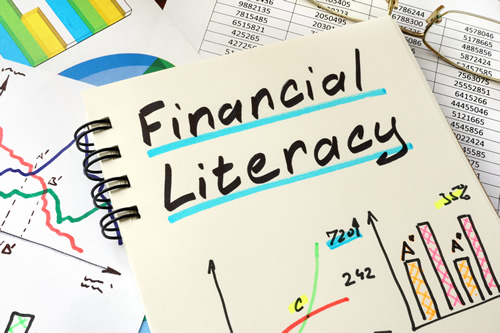April is Financial Literacy Month, and while it’s always a great time to talk about financial literacy, April shines a big spotlight on my favorite topic! Not everyone will geek out about it like I do—and I’m okay with that—but we need to face some hard truths. Nearly one-fourth of millennials are spending more than they earn, college students are racking up record debt, and more and more people say they have less than three months’ worth of emergency funds. We have to teach the skills that will let students enjoy their earnings and look forward to financial security.
As a business and technology teacher dedicated to bright and secure futures for all my students, I’m really excited to see financial literacy being taken more seriously. Recently, I was part of a push to get a bill passed in Massachusetts that outlines financial literacy standards and stipulates that the classes be taught by qualified teachers. We are making progress!
Now, as more support is building at the state level, we have to make sure that teachers get the curricular resources they need to bring financial literacy into their classrooms. Programs like Discover and Discovery Education’s Pathway to Financial Success are great because they supply a variety of resources that teachers need to go beyond balancing a checkbook. (Does anyone write checks anymore?) From banking online to keeping an eye on your Venmo, building credit and understanding loans, the program offers a comprehensive set of financial literacy lessons that today’s students need to have.
Related: What is your school doing to teach financial literacy?
For teachers like me, who are revising and improving their existing courses, it helps to have a program like Pathway to Financial Success because it’s a curated resource where you can always find vetted materials that are interactive, up-to-date, and standards-aligned.
For teachers who are new to teaching financial literacy, it’s important to have the complete curriculum, with lesson plans and resources organized in a way that makes it comprehensive but simple to deliver. Pathway to Financial Success even has short videos that provide the educator with background information as part of the lesson prep.
And for teachers who are working financial literacy into other areas or maybe even clubs, it’s nice to have something modular, so you can select one unit that works for the grade you’re teaching (grades 6-12) and the topic you want to cover.
3 things I’ve learned about teaching financial literacy
1. Make it personal
We probably all remember word problems from math books about people we didn’t know leaving a train station we’d never visit. We have to help the students connect to the material. Luckily, by the time they’re in middle school, most students are familiar with the feeling of not having enough money for something they want and it doesn’t get more personal than that. The Pathway to Financial Success videos speak directly to middle and high school students about budgeting for things like new jeans, movie tickets, and–yes–college, if that’s part of their plan. The program also encourages students to talk to their families and learn about things like their parents’ first jobs and how they made career decisions.
2. Focus on student goals
Compound interest is a really important concept, but talking to teenagers about how much theoretical money they’ll have in retirement will fall flat. I want my students to think about short-term goals, like figuring out how their class can afford an end-of-year field trip, and long-term goals, like whether graduating from college debt-free or owning a home is important to them. We can’t assume every student has the same goals, either, so it’s important to have materials that acknowledge that.
3. Apply learning to authentic practice
There’s nothing like the real world to extend and cement learning. The makerpreneurs at Mansfield High School (students in my entrepreneurship class) have a real business. They put their learning to work for market research, budget planning, advertising, and pricing. They test their ideas in an actual marketplace (the hallway or cafeteria), go back to a Pathway to Financial Success module to boost a skill, and then revise their plans. And they donate their profits to local charities, which is a great motivator and builds another kind of wealth altogether.
Related: Should K-12 schools teach financial literacy? The answer is yes-here’s how
Being able to manage your finances to reach your goals is a skill that serves students throughout their lives. In fact, a Discover survey found that 81 percent of those who took a financial education course in college or as adults feel somewhat or very confident in their ability to make smart financial decisions.
It’s so important to teach these skills and to start early. Every student should have the opportunity to develop the financial literacy that will enable them to make decisions that will support whatever kind of future they design.
Happy Financial Literacy Month!
Additional resources
- High school students say AI will change the workforce - April 18, 2024
- Motivating students using the Self-Determination Theory - April 17, 2024
- Michigan Virtual’s statewide workgroup releasing AI guidance for K-12 educators - April 17, 2024


